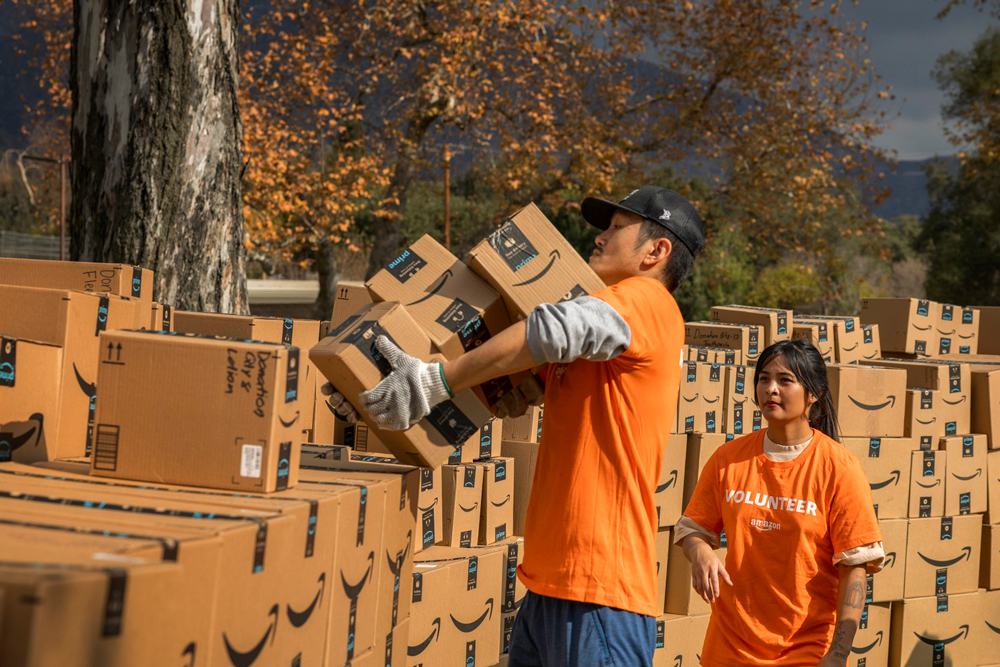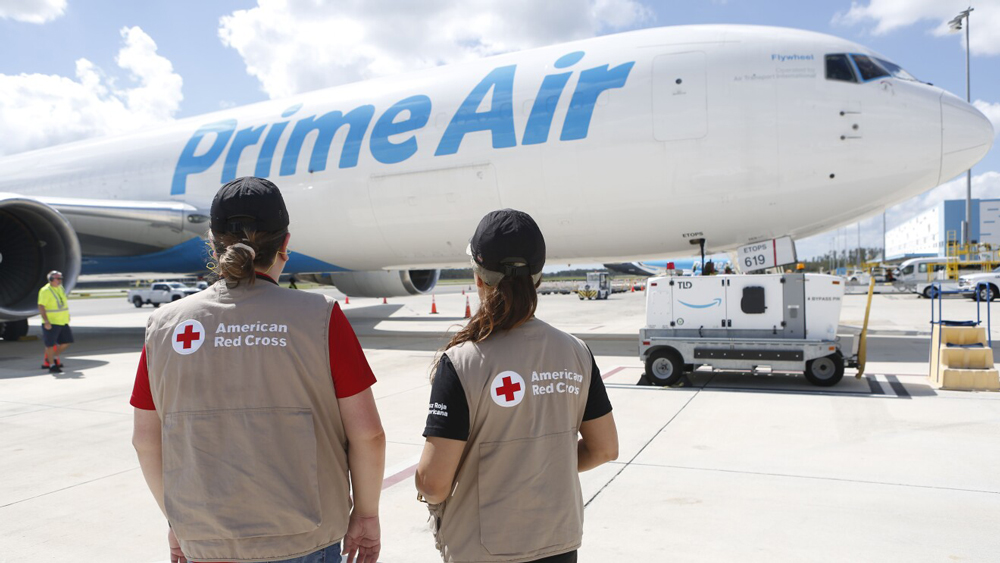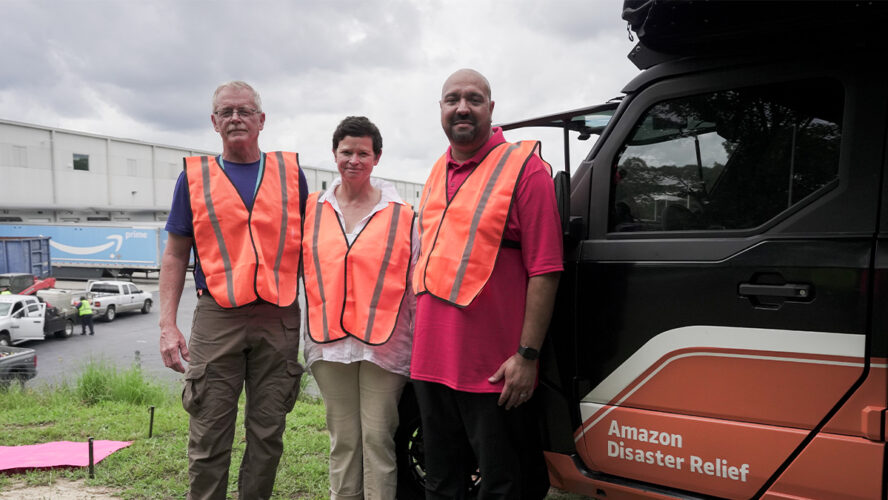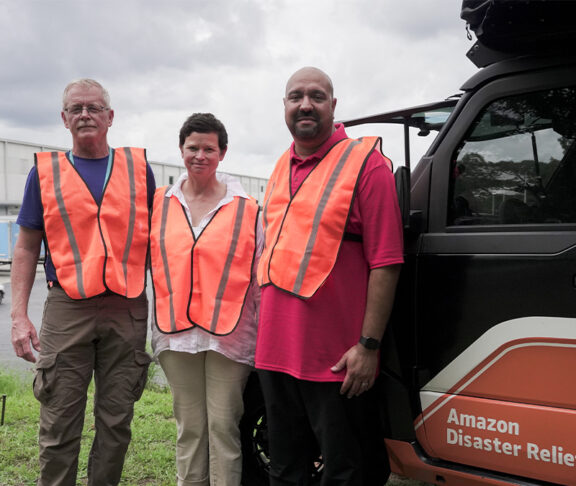A long-time Amazon employee explains how her urge to help turned into a charitable engine that has reached millions of people in need.
When I joined Amazon in 1999, I started as a website book editor and evolved through roles in international management, customer service, and Prime. Today, I serve my most meaningful customers yet: communities affected by disasters.

I leverage Amazon’s delivery network, technology, and talent to help communities recover quickly from hurricanes, wildfires, earthquakes, and other disasters — applying the same customer-centricity, sustainability, and scalability skills that I’ve honed throughout my Amazon career.
Extreme weather is upending more and more lives. Last year alone, weather-related disasters displaced a record-breaking 45 million people, according to the Internal Displacement Monitoring Centre. As disasters rise in frequency and severity, it is our duty to come together as a community and unite the best-suited assets from companies, organizations, and individuals.
I asked myself and then our leaders: What if Amazon used our core business strengths to help disaster-impacted communities?

Applying our strengths in extraordinary circumstances
This is the founding philosophy behind the idea I proposed nearly a decade ago, inspired by people who acted fast. When a deadly tsunami ripped across the Indian Ocean in 2004, Amazon employees launched campaigns across five countries that raised more than $15 million for relief. When Hurricane Sandy killed hundreds and caused widespread damage across seven U.S. states in 2012, online shoppers sent $1 million worth of supplies to survivors from an Amazon Wish List. Impassioned emails from Amazon customers also left an imprint, especially one from a customer in Louisiana who wanted to know if Amazon could deliver relief items where nobody else could after devastating floods in 2016.
I asked myself and then our leaders: What if Amazon used our core business strengths to help disaster-impacted communities? As someone who grew up hearing my family’s stories of rebuilding their lives after World War II, I understand that immediate help with the right resources at the right time offers dignity to families and supports communities in the long run. For this, we didn’t need to invent a new delivery system; we just needed to apply our existing capabilities to extraordinary circumstances to make a real difference in the lives of millions of people struggling after disasters. In 2017, Amazon’s disaster relief program was born.
Fast forward to today. Amazon has now donated more than 26 million items — including medical supplies, food, water, tarps, and diapers — to communities impacted by more than 198 disasters, including deadly flash floods in central Texas and raging wildfires in Los Angeles that altered communities forever in minutes. We’ve also shared lifesaving technology with local governments and first responders, accelerating search-and-rescue efforts, restoring internet connectivity, and establishing off-grid energy sources for shelters and food banks.
Working with local partners to make a difference

At the center of our efforts are partnerships with disaster relief organizations like the American Red Cross, Save the Children, and World Central Kitchen. Our partners on the ground help us understand exactly what affected communities need, which we typically deliver within 72 hours or less. Our network of 15 disaster relief hubs is strategically positioned to rapidly serve disaster-prone areas. Inside our biggest hub near Atlanta, for example, millions of necessities like tarps, toothpaste, and shampoo are ready to go to communities at no cost at a moment’s notice if a hurricane strikes.
As our relief efforts enter their ninth year, it’s never been clearer: Our greatest impact comes from doing what we do best — providing relief quickly and efficiently exactly when and where it’s needed. I share the origin story of Amazon’s disaster relief efforts at this moment in time to inspire more people to act. All of us have different skills, experiences, and resources to offer. Let’s find ways to put them together to strengthen our communities.
To learn more, visit aboutamazon.com/impact/community/disaster-relief


